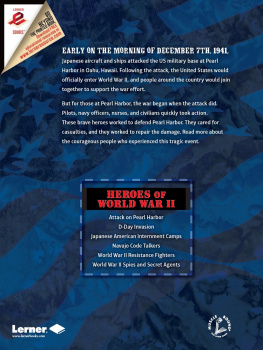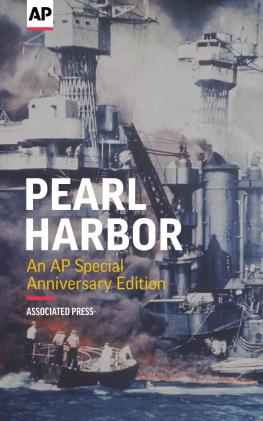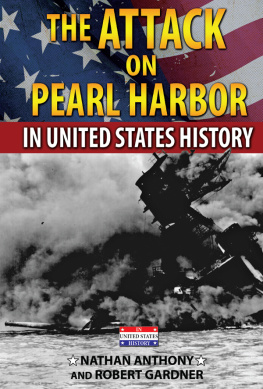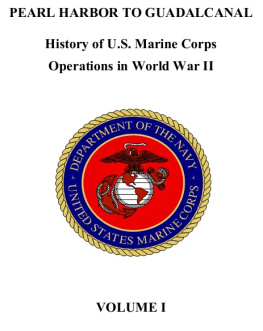
This edition is published by PICKLE PARTNERS PUBLISHINGwww.picklepartnerspublishing.com
To join our mailing list for new titles or for issues with our books picklepublishing@gmail.com
Or on Facebook
Text originally published in 2013 under the same title.
Pickle Partners Publishing 2014, all rights reserved. No part of this publication may be reproduced, stored in a retrieval system or transmitted by any means, electrical, mechanical or otherwise without the written permission of the copyright holder.
Publishers Note
Although in most cases we have retained the Authors original spelling and grammar to authentically reproduce the work of the Author and the original intent of such material, some additional notes and clarifications have been added for the modern readers benefit.
We have also made every effort to include all maps and illustrations of the original edition the limitations of formatting do not allow of including larger maps, we will upload as many of these maps as possible.
WAKING THE SLEEPING GIANT AT PEARL HARBOR: A CASE FOR INTELLIGENCE AND OPERATIONS FUSION
By
Major Blanca Reyes
TABLE OF CONTENTS
Contents
TABLE OF CONTENTS
REQUEST FROM THE PUBLISHER
ABSTRACT
Despite the fact that for many years the United States conducted detailed planning the Japanese were still able to conduct a successful attack at Pearl Harbor. The 1907 war scare with Japan led to the initiation in America of war planning against the threat of Japanese aggression, and the establishment of a standing American capability at the Army War College, where each year students critically analyzed and recommended updates to standing defense plans. Based on these strategic plans, the Hawaiian Department implemented and developed Joint defense plans for Oahu.
Historians have shown that the United States military possessed the intelligence to indicate an impending attack on Pearl Harbor. However, the ability to respond to the attack depended on two things: early warning, and effective defense planning. In 1941, radarthe primary means of early warningremained a new technology. Radar proved to be effective and correctly detected the incoming attack but lacked the ability to discriminate between friendly or enemy aircraft. This monograph has particular significance given todays concern in America regarding homeland defense, since the lessons learned from analyzing the cause of the successful Pearl Harbor attack will offer insight to planners working on modern-day concerns like potential terrorist attacks against the United States involving chemical, biological, or nuclear weapons. By determining whether poor planning or lack of early warning and response capability led to the tragedy of Pearl Harbor, this research will contribute to modern efforts to prepare for homeland defense.
ACKNOWLEDGMENTS
I would like to sincerely express my gratitude to my monograph director, Dr. Mark Calhoun. He helped me organize my thoughts and provided honest feedback. I would also like to thank my seminar leader Col Craig Aitchison for his guidance, mentorship, support, and for helping me believe in myself. I am forever grateful for the countless hours Dr. Alice Butler-Smith spent mentoring me and helping me overcome my grammatical shortcoming. Finally, the production of this monograph would not be possible without the support of my family. I owe my husband and daughters the utmost gratitude and appreciation for their continued love, sacrifice, and for their unconditional support. I would also like to thank my parents, Rosa and Agustin Vera, and my sister, Jackie Vera, for their patience, support, and understanding.
ACRONYMS
ACWAircraft Control and Warning
AICArmy Air Corps
AWSArmy Warning Service
CIACentral Intelligence Agency
CINCLANTCommander in Chief, Atlantic Command
CINCPACCommander in Chief, Pacific Fleet
CINCUSCommander in Chief U.S. Fleet
CNOChief of Naval Operations
COIOffice of the Coordination of Information
COM-1414 th Naval District
DHSDepartment of Homeland Security
DIONavy District Intelligence Office
FBIFederal Bureau of Investigation
G-2Army Intelligence Division
G-5Army War Plans Division
IJNImperial Japanese Navy
JCFDPJoint Coastal Frontier Defense Plan
J-SeriesAmerican Term for group of Japanese code
J-19American term for Tsu code; code was assigned to Japans Honolulu consulate for its radio communication with Japan
MAGICAmerican term for all Japanese diplomatic codes and cipher
MI-8Military Intelligence, Section 8- Signals Intelligence
MIDU.S. Army Military Intelligence Division
ONIOffice of Naval Intelligence
OP-16Office of Naval Intelligence
OP-20Office of Naval Communication
OPNAVOffice of Naval Operations
OrangeU.S. code term for Japan
PURPLEAmerican term for the top priority Japanese diplomatic cipher
SISSignal Intelligence Service
Military Rank Structure Army Grade/Rank
Pay GradeAbbreviationTitle
W-1WO1Warrant Officer
CW-2CWO2Chief Warrant Officer 2
CW-3CW03Chief Warrant Officer 3
CW-4CWO4Chief Warrant Officer 4
CW-5CWO5Chief Warrant Officer 5
O-12LTSecond Lieutenant
O-21LTFirst Lieutenant
O-3CPTCaptain
O-4MAJMajor
O-5LTCLieutenant Colonel
O-6COLColonel
O-7BGBrigadier General
O-8MGMajor General
O-9LTGLieutenant General
O-10GENGeneral
SpecialGAGeneral of the Army
Military Rank Structure Army Grade/Rank
W-1WO1Warrant Officer (No longer in use)
CW-2CWO2Chief Warrant Officer 2
CW-3CW03Chief Warrant Officer 3
CW-4CWO4Chief Warrant Officer 4
CW-5CWO5Chief Warrant Officer 5
O-1ENSEnsign
O-2LTJGLieutenant Junior Grande
O-3LTLieutenant
O-4Lt. Comdr.Lieutenant Commander
O-5Comdr.Commander
O-6CAPTCaptain
O-7Rear Adm.Rear Admiral (Lower Half)
O-8RADMRear Admiral (Upper Half)
O-9ADMVice Admiral
O-10ADMAdmiral Chief of Naval Operations/Commandant CG
O-10FADMFleet Admiral (Special)
INTRODUCTION
Increasingly strained diplomatic relations between Japan and the United States throughout the first decades of the twentieth century culminated in the Japanese attack against Pearl Harbor on December 7, 1941. Japan and the United States had enjoyed mutually beneficial diplomatic and trade relations for decades, but tensions started to mount in the early 1930s. President Theodore Roosevelt brokered in 1905 the peace treaty that concluded the Russo- Japanese War, with terms that favored Japan. {1} The United States and Japan maintained a good diplomatic relationship for several more years, illustrated by their Commerce and Navigation Treaty of 1911- a vital treaty for Japan given its severe lack of natural resources, including strategic materials such as ores and petroleum to supply its military and other industries. Between 1911 and 1939, the United States remained Japans major supplier of such material. However, during this time Japan also embarked on a path toward economic independence, doing so by seeking to create an empire similar to that of the British. {2}









